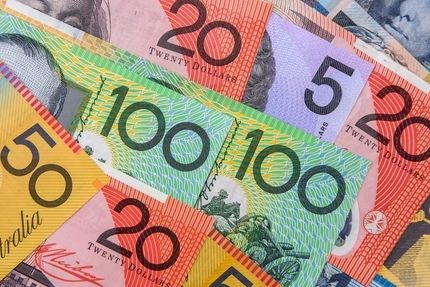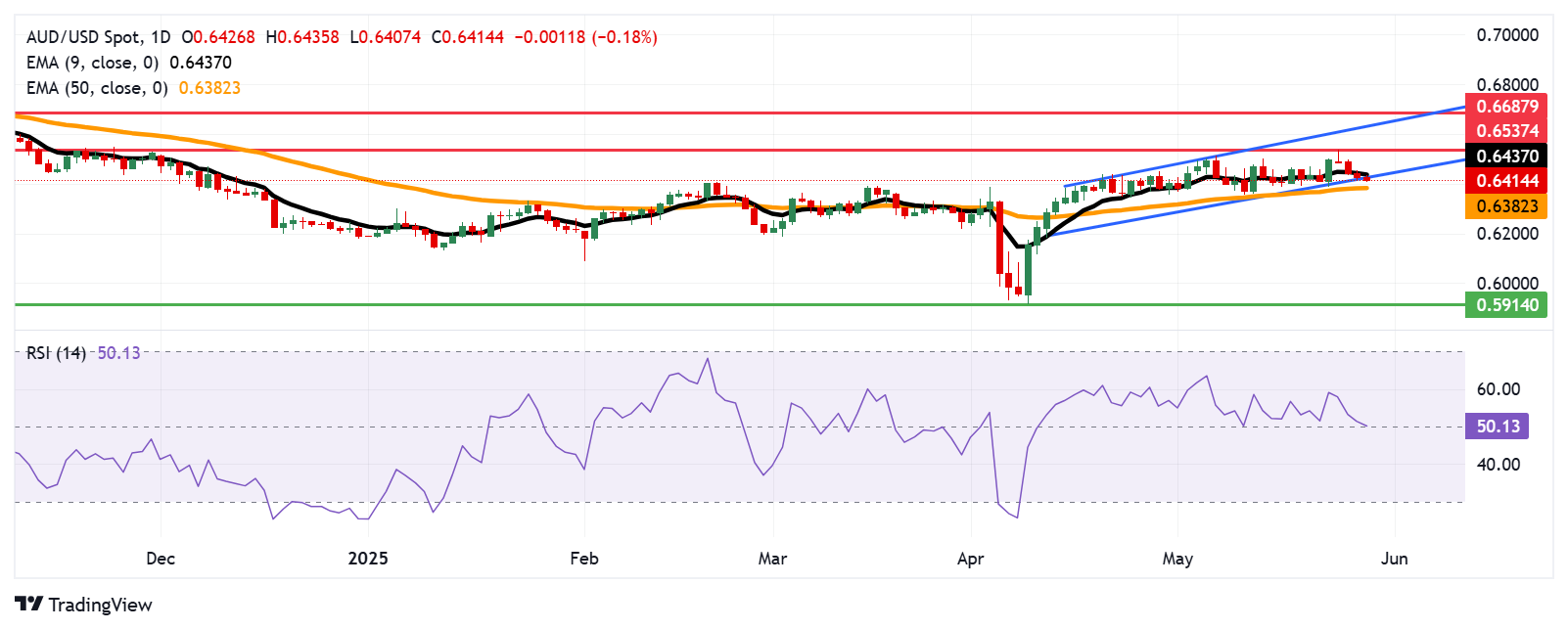Australian Dollar holds losses following disappointing Private Capital Expenditure data

The Australian Dollar depreciates as the US Dollar is trading more than 0.50% higher on Thursday.
Australia’s Private Capital Expenditure declined by 0.1% in Q1, against the expected increase of 0.5%.
A US federal court has blocked President Trump’s proposed "Liberation Day" tariffs from taking effect.
The Australian Dollar (AUD) remains subdued for the fourth successive session on Thursday, following disappointing Private Capital Expenditure data for the first quarter. The AUD/USD pair extends its losses as the US Dollar (USD) is trading higher after a US federal court blocked US President Donald Trump's "Liberation Day" tariffs from taking effect. A Reuters report showed that a federal trade court ruled Trump didn't have the authority to impose sweeping tariffs on imports from countries that sell more to the US.
The Trump administration has halted some sales of jet engines, semiconductors, and certain chemicals to China. The New York Times cited two familiar sources saying that this action is a response to China’s recent export restrictions on exports of critical minerals to the US. Any change in Chinese markets could impact the Australian Dollar as Australia and China are close trade partners.
The AUD could face challenges as the Reserve Bank of Australia (RBA) is expected to deliver more rate cuts in the upcoming policy meetings. The central bank acknowledged progress in curbing inflation and warned that US-China trade barriers pose downside risks to economic growth. Governor Michele Bullock stated that the RBA is prepared to take additional action if the economic outlook deteriorates sharply, raising the prospect of future rate cuts.
Australian Dollar declines as US Dollar continues to advance ahead of Q1 GDP data release
The US Dollar Index (DXY), which measures the value of the Greenback against six major currencies, is trading more than 0.50% higher at 100.40 at the time of writing. Traders likely await the preliminary US Q1 Gross Domestic Product (GDP) data, Personal Consumption Expenditures Prices QoQ, and Initial Jobless Claims, scheduled to be released on Thursday.
Federal Open Market Committee's (FOMC) Minutes for the latest policy meeting, released on Wednesday, indicated that Federal Reserve (Fed) officials broadly agreed that heightened economic uncertainty justified their patient approach to interest-rate adjustments. Fed officials emphasized the need to keep interest rates unchanged for some time, as recent policy shifts cloud the US economic outlook.
The US fiscal deficit could increase further when Trump's “One Big Beautiful Bill” goes through the Senate floor, increasing the risk of bond yields staying higher for longer. Higher bond yields can keep borrowing costs higher for consumers, businesses, and governments. Trump’s bill is expected to increase the deficit by $3.8 billion, as it would deliver tax breaks on tip income and US-manufactured car loans, according to the Congressional Budget Office (CBO).
US Senator Ron Johnson told CNN on Sunday that "I think we have enough votes to stop the process until the president gets serious about spending reduction and reducing the deficit.” Johnson added, “My primary focus now is spending. This is completely unacceptable. Current projections are a $2.2 trillion per year deficit.”
Moody’s downgraded the US credit rating from Aaa to Aa1, following similar downgrades by Fitch Ratings in 2023 and Standard & Poor’s in 2011. Moody’s now projects US federal debt to climb to around 134% of GDP by 2035, up from 98% in 2023, with the budget deficit expected to widen to nearly 9% of GDP. This deterioration is attributed to rising debt-servicing costs, expanding entitlement programs, and falling tax revenues.
The US Dollar faced challenges due to improved risk-on sentiment following the alleviation of trade tensions between the United States and the European Union (EU). President Trump extended the tariff deadline on imports from the EU from June 1 to July 9.
China Industrial Profits rose 3% year-over-year in April, following a previous growth of 2.6%. Additionally, the profits increased 1.4% YoY in the first four months of 2025, advancing from 0.8% growth in the January–March period. The Global Times, a Chinese state media outlet, reported that positive developments contributed to a rise in industrial profits in April.
The Australian Bureau of Statistics reported that monthly inflation, in the price of a fixed basket of goods and services acquired by household consumers, steadied at 2.4% year-over-year in April, surpassing the expected 2.3% increase.
Australian Dollar falls below ascending channel toward 0.6400, 50-day EMA
The AUD/USD pair is trading around 0.6410 on Thursday, with a weakening bullish bias. The technical analysis of the daily chart indicates that the pair has broken below the ascending channel’s lower boundary. The short-term price momentum also weakens as the pair remains below the nine-day Exponential Moving Average (EMA). The 14-day Relative Strength Index (RSI) holds at 50 mark, suggesting neutral bias is in play.
The AUD/USD pair could attempt to regain ground to stay within the ascending channel and test the immediate barrier at the nine-day EMA of 0.6437, followed by a six-month high at 0.6537, which was recorded on May 26. A breach above this level could reinforce the bullish bias and support the pair to approach the upper boundary of the ascending channel around 0.6640.
On the downside, the 50-day EMA at 0.6382 appears as the initial support. A break below this level could weaken the medium-term price momentum and put downward pressure on the pair to navigate the region around 0.5914, the lowest since March 2020.
AUD/USD: Daily Chart

Australian Dollar PRICE Today
The table below shows the percentage change of Australian Dollar (AUD) against listed major currencies today. Australian Dollar was the weakest against the US Dollar.

The heat map shows percentage changes of major currencies against each other. The base currency is picked from the left column, while the quote currency is picked from the top row. For example, if you pick the Australian Dollar from the left column and move along the horizontal line to the US Dollar, the percentage change displayed in the box will represent AUD (base)/USD (quote).
* The content presented above, whether from a third party or not, is considered as general advice only. This article should not be construed as containing investment advice, investment recommendations, an offer of or solicitation for any transactions in financial instruments.


